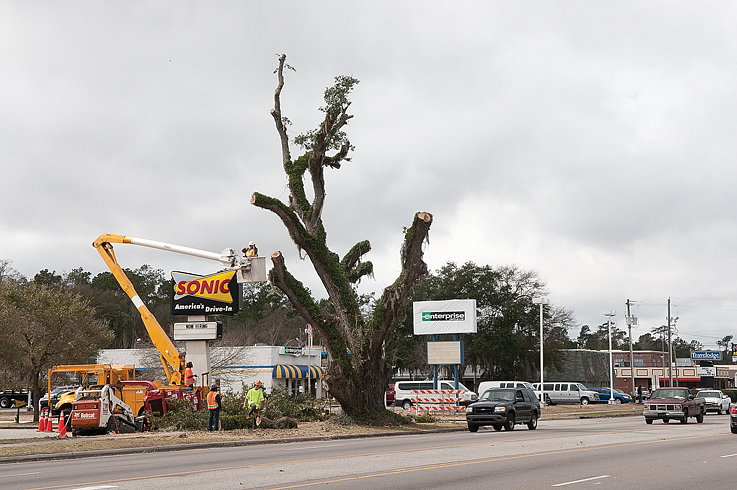A bill to protect historic trees from falling to state road projects is likely to die in committee. Rep. Susi Hamilton, D-New Hanover, introduced the bill in response to protests over the N.C. Department of Transportation’s decision to cut down a well-loved live oak tree on Market Street.
“If it doesn’t get heard this week, it will die,” Hamilton said Monday, April 27. As of late Tuesday, she told Wilmington City Councilwoman Laura Padgett, who worked with her on the proposal, the bill was not scheduled to be heard in time to meet a firm legislative deadline.
Thursday is the N.C. General Assembly’s crossover deadline, when most legislation must pass at least one chamber to remain alive. It was sent to the local government committee and would also have to pass muster in two other committees, environment and regulatory reform.
Hamilton is pushing to have it sent to the transportation committee for a quick hearing this week; otherwise it will not have a chance of passing before the crossover.
House Bill 708 would require the N.C. Department of Transportation to give the same consideration to historic or heritage trees as it does to churches, cemeteries and historic buildings. This would ensure road designers look at other possibilities early in the process.
Often, it is not until after routes are already established that concerns about significant trees arise. Over the years numerous protests have occurred when road planners propose removing historic trees. By then it is sometimes too late.
The most recent example is what became known as the Sonic Oak, along Market Street near Cinema Drive. The tree was saved from the axe during a road improvement project in 1989 after residents staged protests that included sitting watch in the old live oak to prevent crews from cutting it down.
Eventually the road was redesigned to accommodate the tree. But it did not survive the upcoming widening of Market Street and improvements to the intersection at Market and Kerr Avenue. The tree was cut down in March despite protests.
Hamilton and Wilmington City Councilwoman Laura Padgett worked together on the bill to ensure the DOT considers possible alternatives before it is too late to make changes. It does not prevent the DOT from cutting trees if there is no other cost-effective option.
HB 708 would provide an added layer of protection for trees classified “historic” or “heritage” by a city or county, as Wilmington’s Tree Commission had bestowed that designation on the Sonic tree prior to the latest DOT project.
Although the Wilmington Tree Commission worked with the DOT in an effort to avert taking out the Sonic Oak, the state agency did not accept the alternatives offered, said Bill Jayne, a member and former chairman of the commission. Cost was one factor cited, he said.
The commission’s action came too late in the process to save the tree. Requiring transportation officials to consider ways to work around heritage trees would be an improvement, Jayne said,
As written the bill would apply only to projects of the DOT. Tree-trimming practices, such as those by Duke Energy that generate numerous complaints, would not be subject to the provisions in the bill.
“This bill in itself won’t stop the destruction of trees,” Hamilton said. “… It just provides a higher level of review.”
State Rep. John Torbett, R-Gaston, is the other primary sponsor of the bill.
DOT officials have no objection to the bill as long as the provisions are incorporated into the National Environmental Policy Act’s requirements from the beginning, Division 3 Engineer Karen Collette said in an email. The act requires collaboration by a number of federal and state agencies to reach a consensus before a road project can begin. Officials are looking for consistency in the process.
email [email protected]




